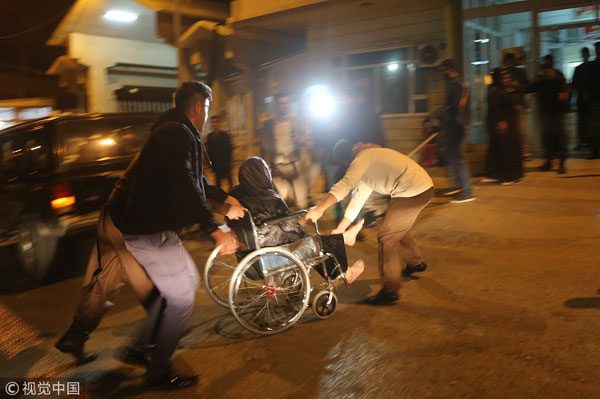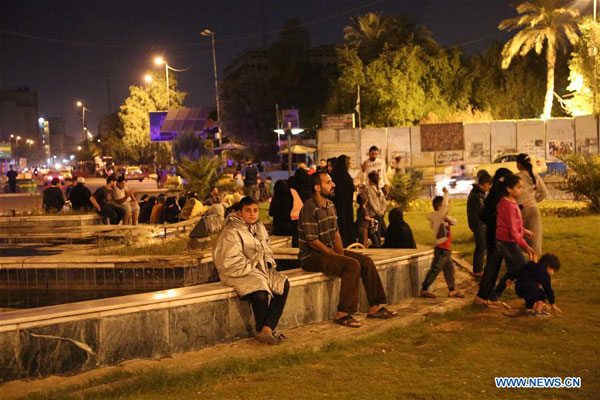
BAGHDAD/ANKARA – More than 120 people in Iran and at least several others in Iraq were killed on Sunday when a powerful magnitude 7.3 earthquake hit the region, state media in the two countries said, as rescuers stepped up efforts overnight to find dozens trapped under rubble.
At least 129 people were killed in Iran’s Kermanshah province on the Iraqi border, the provincial deputy governortold state television.
“There are still people under the rubble. We hope the numberof dead and injured won’t rise too much, but it will rise,” Mojtaba Nikkerdar said
More than 60 of the victims were in the town of Sarpol-e Zahab, about 15 km (10 miles) from the border.
Kurdish health officials also said at least four people were killed in Iraq and there were 50 injured.
The US Geological Survey said the quake measured magnitude 7.3, while an Iraqi meteorology official put its magnitude at 6.5 with the epicentre in Penjwin in Sulaimaniyah province in the Kurdistan region close to the main border crossing with Iran.
The electricity was cut off in several Iranian and Iraqi cities, and fears of aftershocks sent thousands of people in both countries out onto the streets and parks in cold weather.
“The night has made it difficult for helicopters to fly to the affected areas and some roads are also cut off… we are worried about remote villages,” Iranian Interior Minister Abdolreza Rahmani Fazli said in an interview on state television.
Many houses in rural parts of the province are made of mudbricks and are known to crumble easily in quake-prone Iran.
A quake registering a magnitude between 7 and 7.9 can inflict widespread, heavy damage.
Local people said in media reports and on Twitter they had felt several aftershocks. Television said schools were closed in Kermanshah and Ilam provinces on Monday.

On the Iraqi side, the most extensive damage was in the town of Darbandikhan, 75 km (47 miles) east of the city of Sulaimaniyah in the semi-autonomous Kurdistan Region.
More than 30 people were injured in the town, according to Kurdish Health Minister Rekawt Hama Rasheed.
“The situation there is very critical,” Rasheed told Reuters.
The district’s main hospital was severely damaged and had no power, Rasheed said, so the injured were being taken to Sulaimaniyah for treatment. There was extensive structural damage to buildings and homes.
In Halabja, local officials said a 12-year-old boy died from an electric shock when an electric cable fell during the earthquake.
Many residents in the Iraqi capital, Baghdad, rushed out ofhouses and tall buildings in panic.
“I was sitting with my kids having dinner and suddenly the building was just dancing in the air,” said Majida Ameer, who ran out of her building in the capital’s Salihiya district with her three children. “I thought at first that it was a huge bomb.
But then I heard everyone around me screaming: ‘Earthquake!'”
There were similar scenes in Erbil, the capital of the Kurdistan Region, and across other cities in northern Iraq, close to the quake’s epicentre.
Iraq’s meteorology centre advised people to stay away from buildings and not to use elevators, in case of aftershocks.


